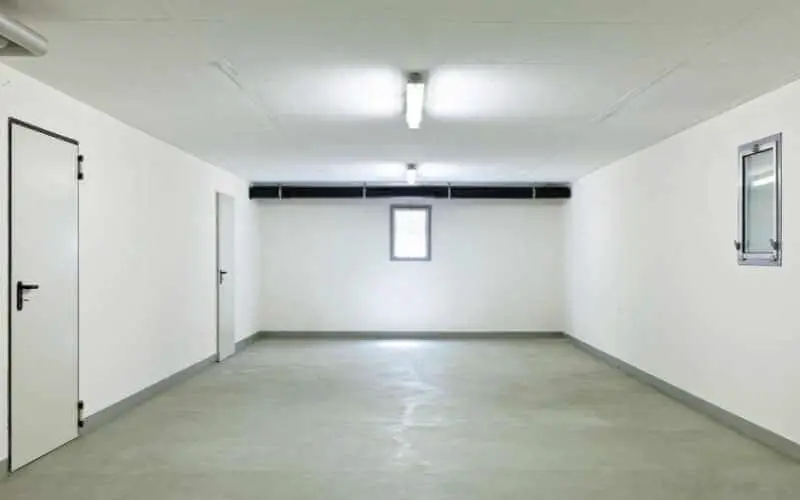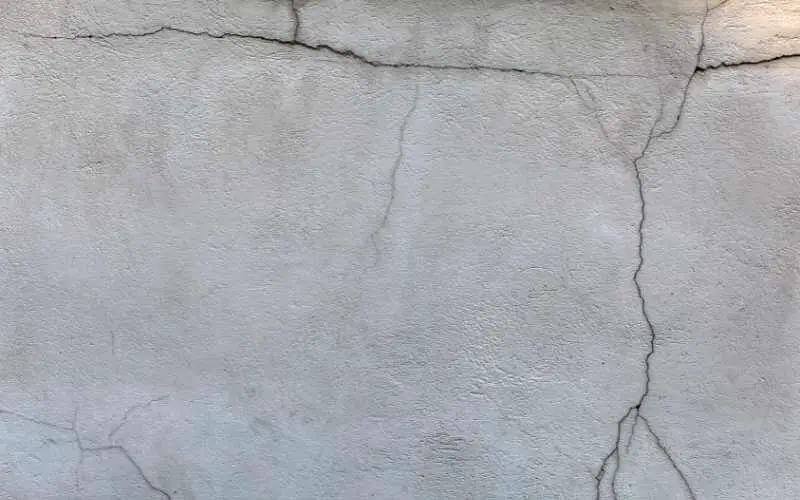Concrete garage floors are prone to cracks because concrete is not ductile and lacks elasticity, so it cannot stretch or bend.
If your garage floor experiences shrinkage or expansion due to temperature change, it may become cracked.
Aside from temperature change, a couple of other factors can cause your concrete garage floor to crack.
One of such causes is the contraction joints built into the concrete slabs; these grooves create a weakened line in the concrete that creates cracks along the groove of the floor surface.
The settling of the earth underneath the slab, curing issues, or other unpreventable causes leaves your concrete floor with cracks that alter the floor’s appearance.
To repair cracks in concrete garage floor, you need to inspect the crack and prepare the floor area by cleaning it then fill up the crack with an epoxy concrete crack filler and allow it to dry.
Let’s look into more details on how to repair cracks in concrete garage floor.
How to Repair Cracks in Concrete Garage Floor
Table of Contents
Inspect the Cracks
Before you begin any repair, you need to inspect the cracks to see if they require professional attention or handle the project yourself.
Also, check the grading and drainage around your home to make sure that water flows away from your house and isn’t trapped under it. Any abnormality with the water drainage should be fixed before tackling the cracks.
Next, assess the two sides of the crack to determine if they are level. If they are not, you may need to bring in a contractor for a more thorough assessment.
As the crack could be a sign of other underlying problems with your slab, which requires more extensive repairs such as re-leveling or slab replacement. If the sides of the crack are level, you can go ahead with the repair.
Next, determine the size of the crack so you can choose the right filler; for smaller cracks (up to ½ inch in width), you can use an epoxy concrete crack filler, but you will need a mortar mix for larger cracks. Gather the needed tools and materials, and you can get into the process.
Read: What you need to know about latex floor
Prep the Floor Area
Before you begin any kind of repair, properly clean up the area first. This enables the filler to bond securely with the concrete. Clean the entire floor and not just the area with the cracks, so your garage receives a total transformation.
Prep the Cracks
You also need to prep the crack itself, use a vacuum to remove all the gravel, dirt, and debris embedded deep inside the cracks. You can use a bristle brush to get down into the crack so you can remove all the chipped concrete.
If this generates a lot of dust, you can pressure wash the crack and the surrounding area. Allow the crack and entire floor to dry before you continue with the project.
Fixing Small Cracks
Repairing small cracks in concrete garage floor is an easy job. You will need an epoxy concrete crack filler, which should be filled down the crack in the concrete.
Work the filler into the crack using a small trowel and allow it to settle for a few minutes for it to settle. Adequately fill the entire area of the crack with as much filler it can hold and use a trowel to level it.
Allow the filler to dry for at least 24 hours before walking over it or returning any item that was previously on the floor. You may need to wait longer for the filler to dry if you live in a moist climate.
Read: How thick can a floor leveler be poured
Fixing Large Cracks
If you are dealing with a larger crack, you will need to take additional steps, depending on the size of the crack. For very large cracks, you will need a cold chisel to undercut the crack in the floor; this will help hold the patch in place and prevent further damage to your floor.
For extensive cracks, you might need to cut out the damaged concrete using a circular saw with a concrete blade and remove the rubble. With the crack in the garage floor cleared out, you can start repairing the damage.
You will need a concrete bonding adhesive to fix such damage because the concrete does not adhere overly well to itself. When an adhesive is used, it helps the sand mix patch adhere to the floor slab better.
Before using the adhesive, give the area a thorough cleaning; this also helps to enhance the adhesion of the adhesive directly to the slab.
You can apply the adhesive to the floor in two ways. You can use a brush to apply it onto the sides of the crack before adding the filler, then allow it to dry fully in between or mix it with the concrete filler itself.
Whichever application method you opt for, remember to follow the manufacturer’s directions on how to use the product.
Read: How to stop water coming through concrete floor
Conclusion
You can repair cracks in concrete garage floor using concrete or epoxy fillers. The suitable method for fixing your cracked concrete floor depends on the size of the crack you are dealing with, but either way, they are usually quite easy to fix.
However, you will need to consult a professional if you notice an unevenness between the sides of the crack, as that could be an indicator of worse underlying issues.

